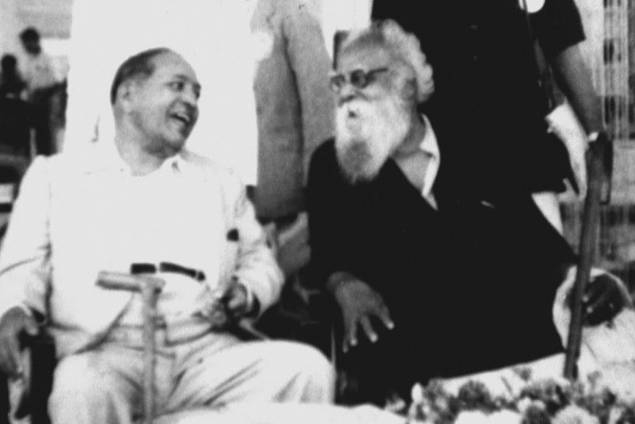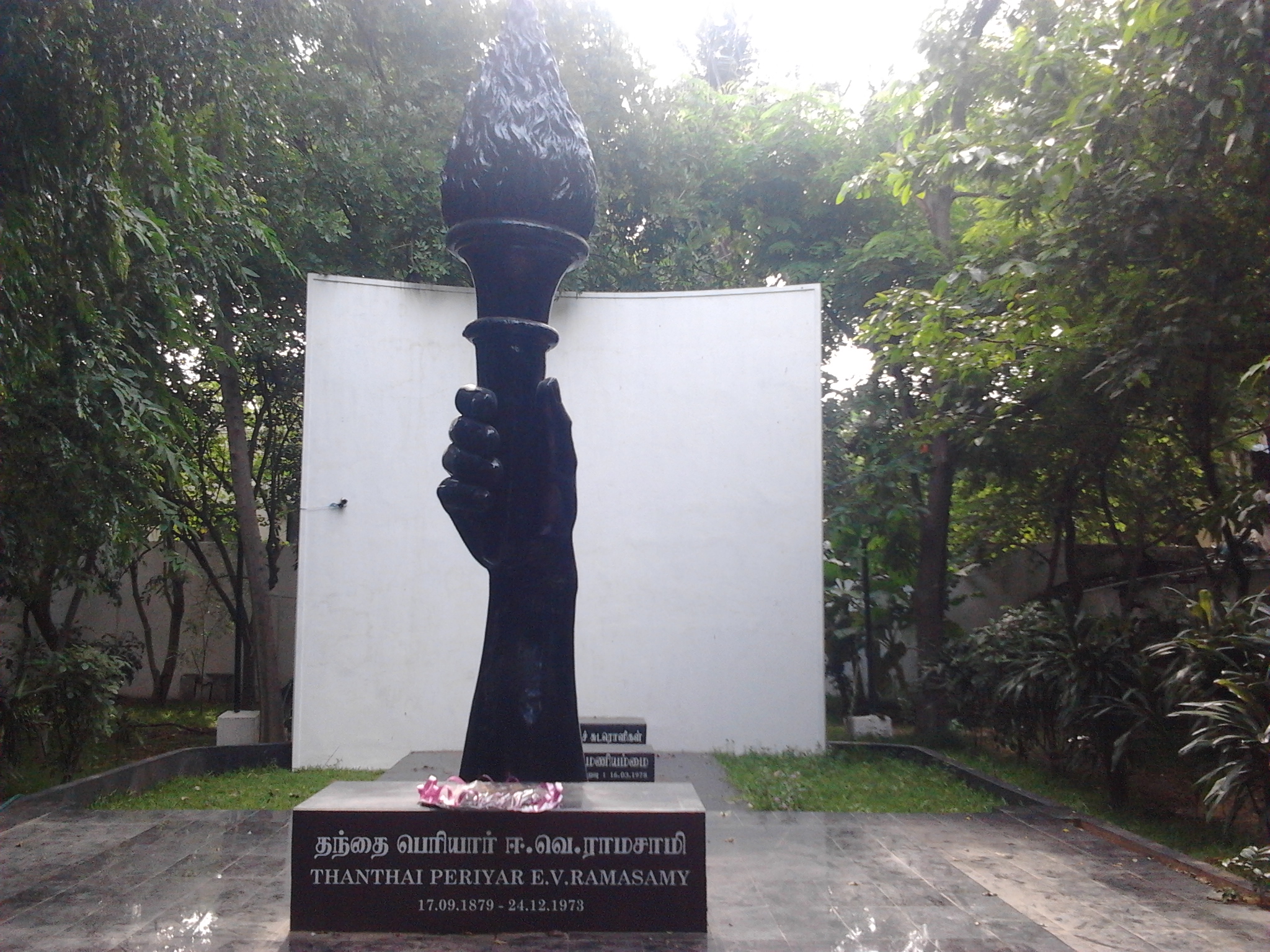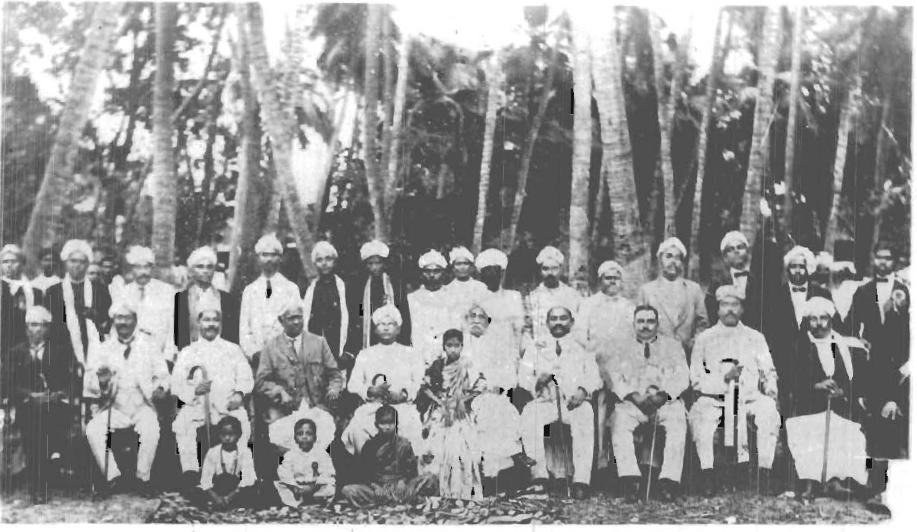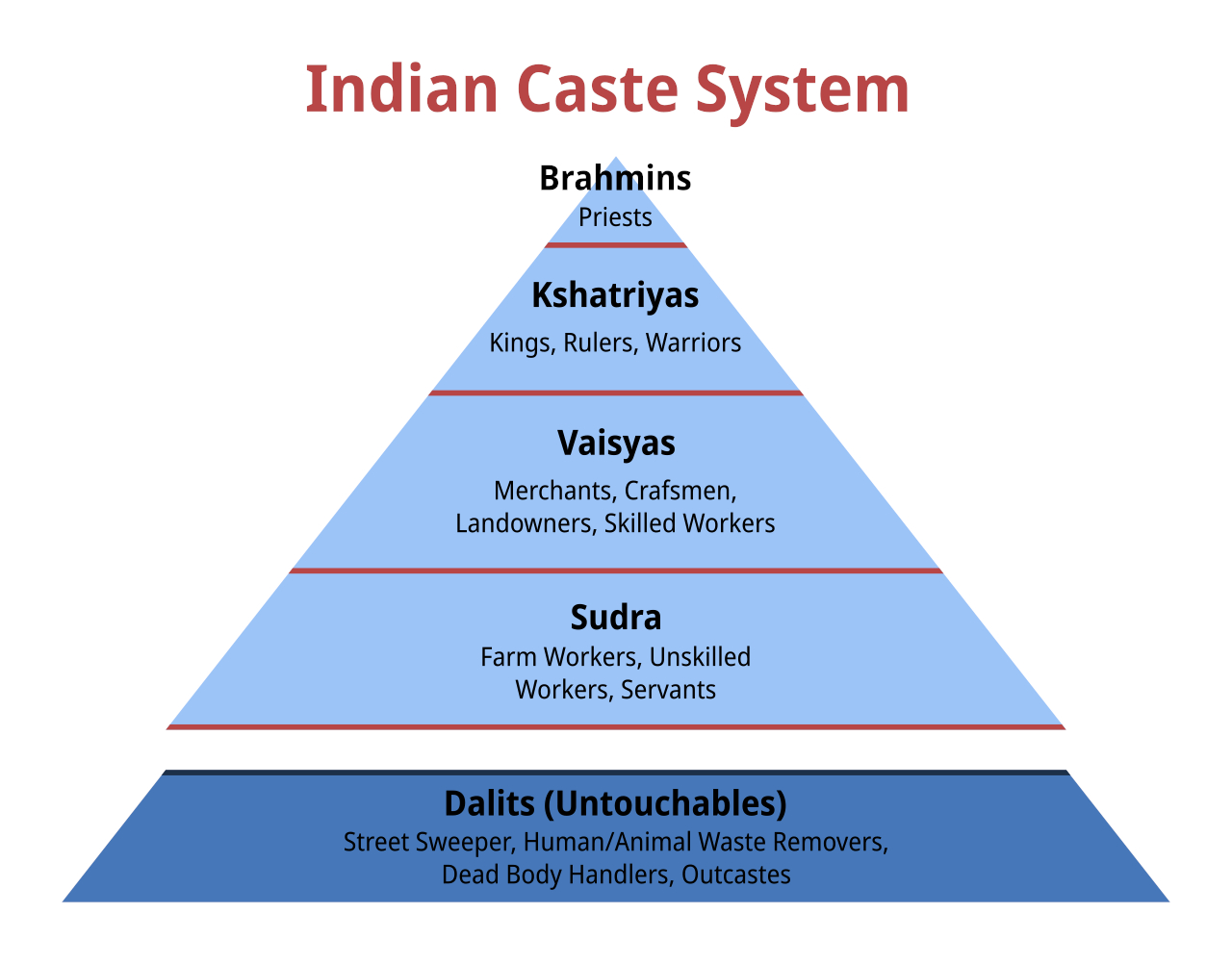|
Anti-Brahmin
Anti-Brahminism is a term used in opposition to caste based hierarchal social order which places Brahmins at its highest position. Initial expressions of Anti-Brahminism emerged from instances of pre-colonial opposition to the caste system in India, ideological influences during the colonial period, and from a colonialist Protestant Christian understanding of religion in the 19th century, which viewed " Brahminism" as a corrupted religion imposed on the Indian population. Ambedkar and some Hindu Reformists structured their criticism along similar lines following the 19th century criticism of "Brahminism," opposing the dominant position Brahmins had acquired by the time of British rule in the 19th century. However, anti-Brahminism has also manifested as an anti-Brahmin sentiment, notably during the Dravidian movement and the Self-Respect Movement in the 20th century, and even in the 21st century among some followers of Periyar. Definitions "Brahminism" refers both to ... [...More Info...] [...Related Items...] OR: [Wikipedia] [Google] [Baidu] |
Dravidian Movement
Dravidian politics is the main political ideology in Tamil Nadu that seeks to safeguard the rights of the Dravidian peoples. Dravidian politics started in British India with the formation of the Justice Party on 20 November 1916 in Victoria Public Hall in Madras by C. Natesa Mudaliar along with T. M. Nair and P. Theagaraya Chetty as a result of a series of non-Brahmin conferences and meetings in the presidency. Communal division between Brahmins and non-Brahmins began in the presidency during the late-19th and early-20th century, mainly due to caste prejudices and disproportionate Brahmins representation in government jobs. The Justice Party's foundation marked the culmination of several efforts to establish an organisation to represent the non-Brahmins in Madras Presidency. Background Brahmin/non-Brahmin divide The Brahmins in Madras Presidency enjoyed a higher position in India's social hierarchy. By the 1850s, Telugu Brahmins and Tamil Brahmins comprising only 3.2% o ... [...More Info...] [...Related Items...] OR: [Wikipedia] [Google] [Baidu] |
Self-Respect Movement
The Self-Respect Movement is a popular human rights movement originating in South India aimed at achieving social equality for those oppressed by the Indian caste system, advocating for lower castes to develop self-respect. It was founded in 1925 by S. Ramanathan, who invited E. V. Ramasamy (also known as Periyar) to head the India against Brahminism movement in Tamil Nadu. The movement was extremely influential not only in Tamil Nadu, but also overseas in countries with large Tamil populations, such as Sri Lanka, Burma, and Singapore. Among Singapore Indians, groups like the Tamil Reform Association, and leaders such as Thamizhavel G. Sarangapani were prominent in promoting the principles of the Self-Respect Movement among the local Tamil population through schools and publications. A number of political parties in Tamil Nadu, such as Dravida Munnetra Kazhagam (DMK) and All India Anna Dravida Munnetra Kazhagam (AIADMK) owe their origins to the Self-Respect Movement; the ... [...More Info...] [...Related Items...] OR: [Wikipedia] [Google] [Baidu] |
Periyar
Erode Venkatappa Ramasamy (17 September 187924 December 1973), commonly known as Periyar, was an Indian social activist and politician. He was the organizer of the Self-Respect Movement and Dravidar Kazhagam and is considered the architect of Dravidian politics. Periyar joined the Indian National Congress in 1919 and participated in the Vaikom Satyagraha, during which he was imprisoned twice. He resigned from the Congress in 1925, believing that they only served the interests of Brahmins. From 1929 to 1932, he toured British Malaya, Europe and the Soviet Union which later influenced his Self-Respect Movement in favor of caste equality. In 1939, he became the head of the Justice Party, which he transformed into a social organisation named ''Dravidar Kazhagam'' in 1944. The party later split with one group led by C. N. Annadurai forming the Dravida Munnetra Kazhagam (DMK) in 1949. While continuing the Self-Respect Movement, he advocated for an independent Dravida Nadu (lan ... [...More Info...] [...Related Items...] OR: [Wikipedia] [Google] [Baidu] |
Periyar E
Erode Venkatappa Ramasamy (17 September 187924 December 1973), commonly known as Periyar, was an Indian social activist and politician. He was the organizer of the Self-Respect Movement and Dravidar Kazhagam and is considered the architect of Dravidian politics. Periyar joined the Indian National Congress in 1919 and participated in the Vaikom Satyagraha, during which he was imprisoned twice. He resigned from the Congress in 1925, believing that they only served the interests of Brahmins. From 1929 to 1932, he toured British Malaya, Europe and the Soviet Union which later influenced his Self-Respect Movement in favor of caste equality. In 1939, he became the head of the Justice Party, which he transformed into a social organisation named ''Dravidar Kazhagam'' in 1944. The party later split with one group led by C. N. Annadurai forming the Dravida Munnetra Kazhagam (DMK) in 1949. While continuing the Self-Respect Movement, he advocated for an independent Dravida Nadu (land ... [...More Info...] [...Related Items...] OR: [Wikipedia] [Google] [Baidu] |
Madras Presidency
The Madras Presidency or Madras Province, officially called the Presidency of Fort St. George until 1937, was an administrative subdivision (province) of British India and later the Dominion of India. At its greatest extent, the presidency included most of southern India, including all of present-day Andhra Pradesh, almost all of Tamil Nadu and parts of Kerala, Karnataka, Odisha and Telangana in the modern day. The city of Madras was the winter capital of the presidency and Ooty (Udagamandalam) was the summer capital. The Madras State was neighboured by the Kingdom of Mysore to the northwest, the Kingdom of Cochin and Kingdom of Travancore to the southwest, the Kingdom of Pudukkottai in the center, and the Hyderabad State to the north. Some parts of the presidency were also flanked by Bombay State ( Konkan Districts) and Central States (modern Madhya Pradesh). In 1639, the English East India Company purchased the village of Madraspatnam and one year later it establis ... [...More Info...] [...Related Items...] OR: [Wikipedia] [Google] [Baidu] |
Justice Party (India)
The Justice Party, officially the South Indian Liberal Federation, was a political party in the Madras Presidency of British Raj (current Tamil Nadu, India) It was established on 20 November 1916 in Victoria Public Hall in Madras by Dr C. Natesa Mudaliar and co-founded by T. M. Nair, P. Theagaraya Chetty and Alamelu Mangai Thayarammal as a result of a series of non-Brahmin conferences and meetings in the presidency. Communal division between Brahmins and non-Brahmins began in the presidency during the late-19th and early-20th century, mainly due to caste in India, caste prejudices and disproportionate Brahminical representation in government jobs. The Justice Party's foundation marked the culmination of several efforts to establish an organisation to represent the non-Brahmins in Madras and is seen as the start of the Dravidian Movement. During its early years, the party was involved in petitioning the imperial administrative bodies and Government officials demanding more represe ... [...More Info...] [...Related Items...] OR: [Wikipedia] [Google] [Baidu] |
Dalit
Dalit ( from meaning "broken/scattered") is a term used for untouchables and outcasts, who represented the lowest stratum of the castes in the Indian subcontinent. They are also called Harijans. Dalits were excluded from the fourfold varna of the caste hierarchy and were seen as forming a fifth varna, also known by the name of ''Panchama''. Several scholars have drawn parallels between Dalits and the '' Burakumin'' of Japan, the '' Baekjeong'' of Korea and the peasant class of the medieval European feudal system. Dalits predominantly follow Hinduism with significant populations following Buddhism, Sikhism, Christianity, and Islam. The constitution of India includes Dalits as one of the Scheduled Castes; this gives Dalits the right to protection, positive discrimination (known as reservation in India), and official development resources. Terminology The term ''Dalit'' is for those called the "untouchables" and others that were outside of the traditional Hindu caste ... [...More Info...] [...Related Items...] OR: [Wikipedia] [Google] [Baidu] |
Caste-related Violence In India
Caste-related violence in India has occurred and continues to occur in various forms. According to a report by Human Rights Watch: inhuman, and degrading treatment of over 165 million people in India has been justified on the basis of caste. Caste is descent-based and hereditary in nature. It is a characteristic determined by one's birth into a particular caste, irrespective of the faith practiced by the individual. Caste denotes a traditional system of rigid social stratification into ranked groups defined by descent and occupation. Caste divisions in India dominate in housing, marriage, employment, and general social interaction-divisions that are reinforced through the practice and threat of social ostracism, economic boycotts, and physical violence. Quoting about the atrocities that are committed by land holding communities on Untouchables, Author Dr. C. P. Yadav states that, "Atrocities are committed on the 'Untouchables' in the villages and small towns and the incidents ... [...More Info...] [...Related Items...] OR: [Wikipedia] [Google] [Baidu] |
Brahminism
The historical Vedic religion, also called Vedism or Brahmanism, and sometimes ancient Hinduism or Vedic Hinduism, constituted the religious ideas and practices prevalent amongst some of the Indo-Aryan peoples of the northwest Indian subcontinent (Punjab and the western Ganges plain) during the Vedic period ( 1500–500 BCE). These ideas and practices are found in the Vedic texts, and some Vedic rituals are still practised today. The Vedic religion is one of the major traditions which shaped modern Hinduism, though present-day Hinduism is significantly different from the historical Vedic religion. The Vedic religion has roots in the Indo-Iranian culture and religion of the Sintashta ( 2200–1750 BCE) and Andronovo ( 2000–1150 BCE) cultures of Eurasian Steppe. This Indo-Iranian religion borrowed "distinctive religious beliefs and practices" from the non-Indo-Aryan Bactria–Margiana culture (BMAC; 2250–1700 BCE) of south of Central Asia, when pastoral Indo-Aryan tribes ... [...More Info...] [...Related Items...] OR: [Wikipedia] [Google] [Baidu] |
Caste System In India
The caste system in India is the paradigmatic ethnographic instance of social classification based on castes. It has its origins in ancient India, and was transformed by various ruling elites in medieval, early-modern, and modern India, especially in the aftermath of the collapse of the Mughal Empire and the establishment of the British Raj. Beginning in ancient India, the caste system was originally centered around '' varna'', with ''Brahmins'' (priests) and, to a lesser extent, ''Kshatriyas'' (rulers and warriors) serving as the elite classes, followed by '' Vaishyas'' (traders, merchants, and farmers) and finally '' Shudras'' (labourers). Outside of this system are the oppressed, marginalised, and persecuted '' Dalits'' (also known as " Untouchables") and '' Adivasis'' (tribals). Over time, the system became increasingly rigid, and the emergence of '' jati'' led to further entrenchment, introducing thousands of new castes and sub-castes. With the arrival of Islamic rule, ... [...More Info...] [...Related Items...] OR: [Wikipedia] [Google] [Baidu] |
Chief Minister Of Tamil Nadu
The chief minister of Tamil Nadu is the head of government, chief executive of the Indian Federated state, state of Tamil Nadu. In accordance with the Constitution of India, the Governor (India), governor is a state's ''de jure'' head, but ''de facto'' executive authority rests with the Chief Minister (India), chief minister. Following elections to the Tamil Nadu Legislative Assembly, the Governor of Tamil Nadu, state's governor usually invites the party (or coalition) with a majority of seats to form the Government of Tamil Nadu, government. The governor appoints the chief minister, whose Cabinet (government), council of ministers are Cabinet collective responsibility, collectively responsible to the assembly. Given that he has the confidence of the assembly, the chief minister's term is for five years and is subject to no term limits. Since 1952, Tamil Nadu has had 12 Chief minister (India), chief ministers, 13 including V. R. Nedunchezhiyan, who twice acted in the role. The L ... [...More Info...] [...Related Items...] OR: [Wikipedia] [Google] [Baidu] |







